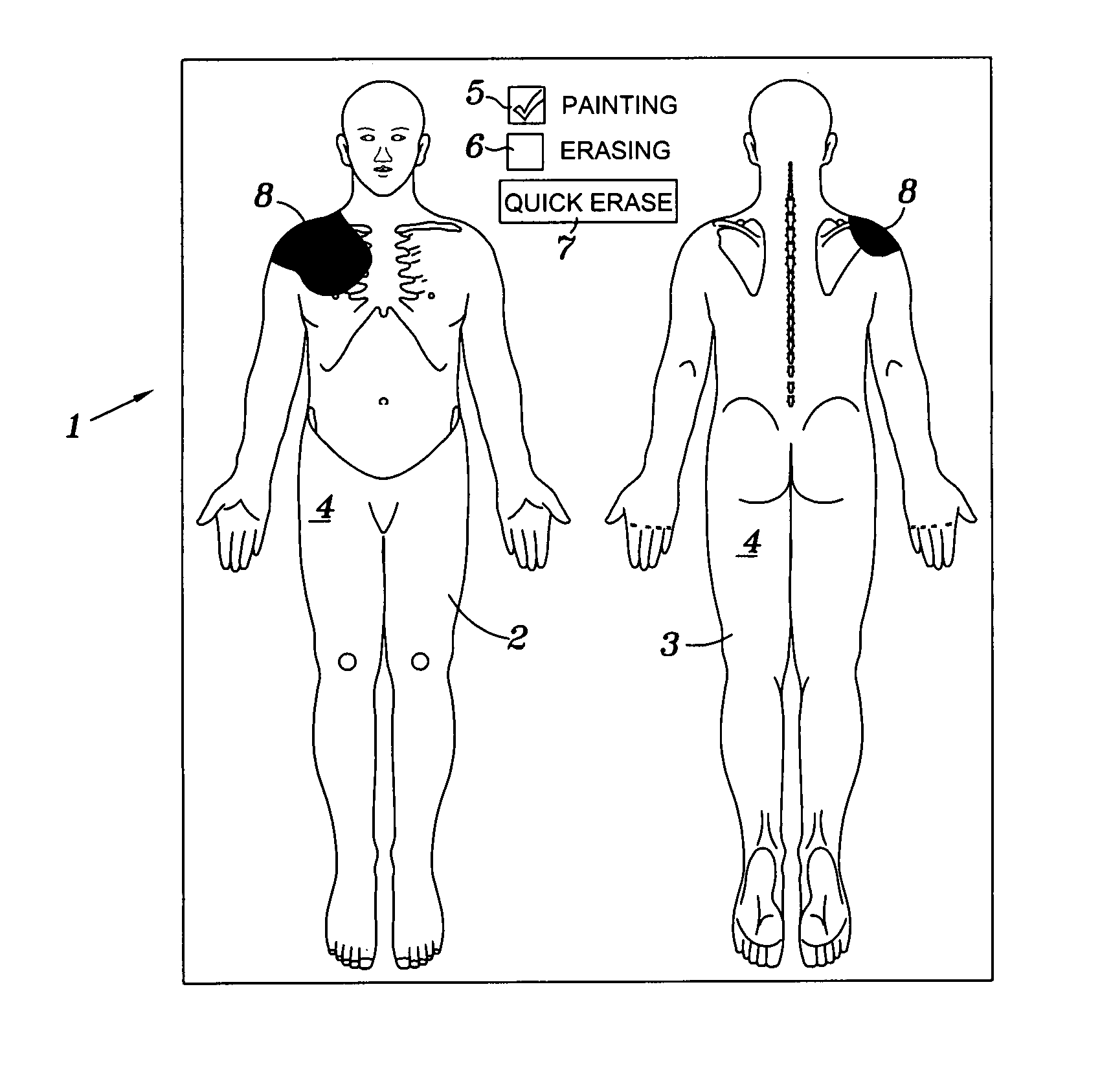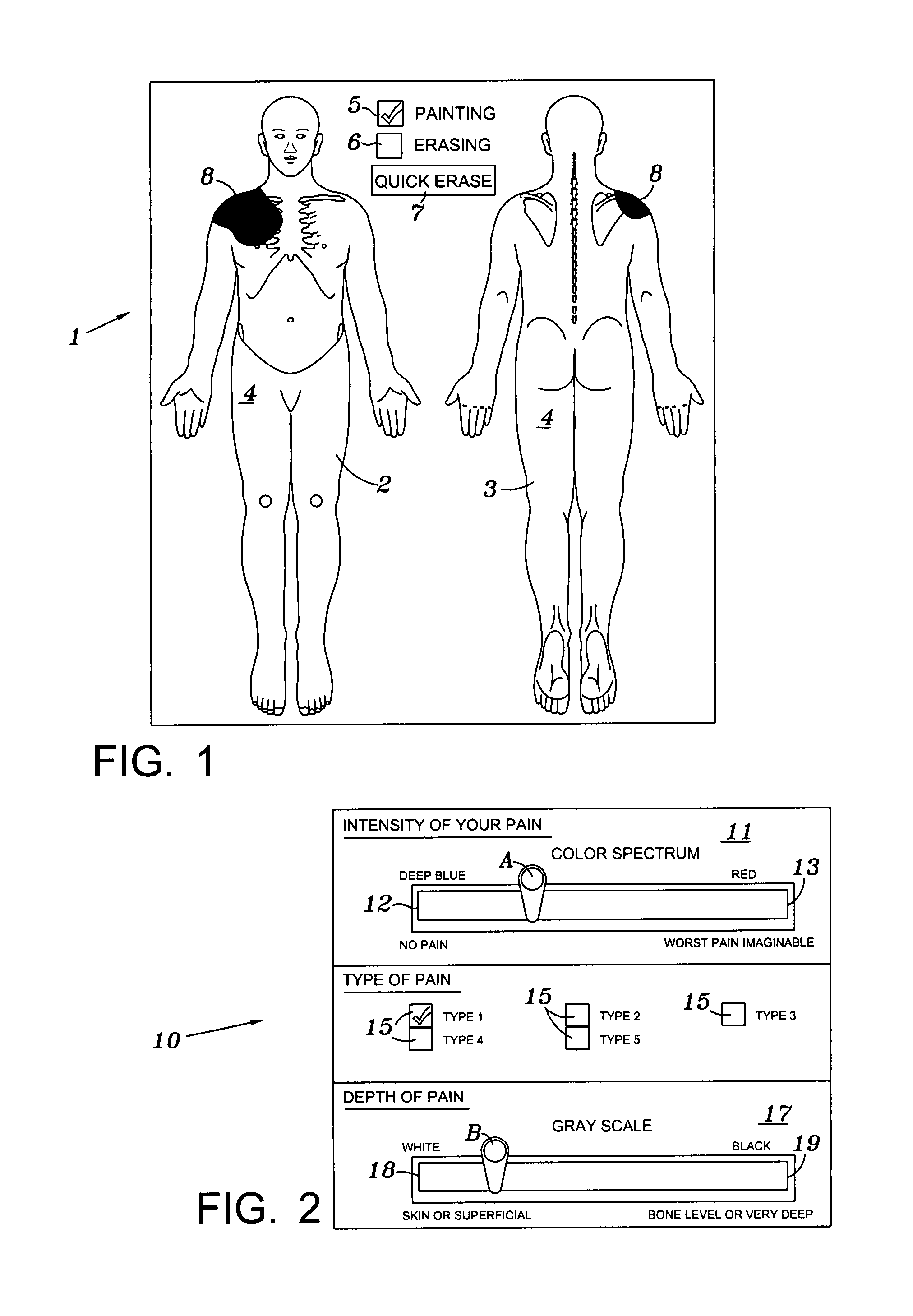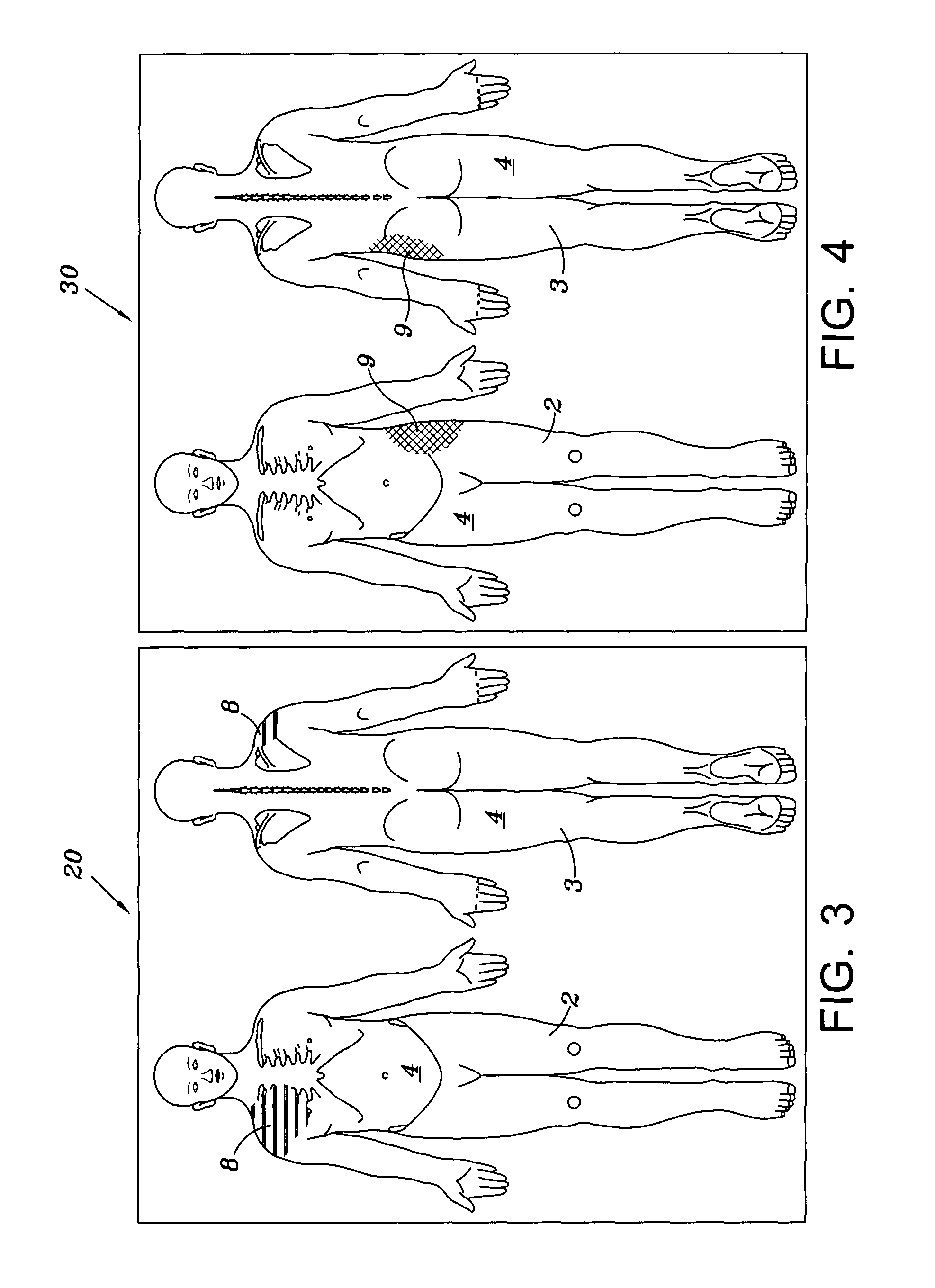Computer pain assessment tool
a pain assessment and computer technology, applied in the field of computer systems, can solve the problems of difficult objective evaluation, complex and often unreliable, retrospective symptom data including pain is notoriously inaccurate, etc., and achieve the effect of simple and more accurate communication
- Summary
- Abstract
- Description
- Claims
- Application Information
AI Technical Summary
Benefits of technology
Problems solved by technology
Method used
Image
Examples
Embodiment Construction
[0027]Referring now to the drawings and in particular to FIGS. 1 through 4, portions of the interactive display for patient inputs are displayed. The patients are guided through FIGS. 1 through 4 by instruction on each successive screen displays 1, 10, 20, 30 and further assisted by selecting the help screen on the navigation bar, as well as, selecting the prior screen or the next screen on the navigation bar when applicable. In order to illustrate the patient's computer pain assessment, the help aid on the navigation bar and on screen instructions are not shown in FIGS. 1 through 4 and FIG. 6. Likewise, for simplicity of illustration only, FIGS. 7, 8 and 9, screens 70A, 70B and 70C, respectively, do not display the patient information such as name, social security number, gender, date of birth, physical data, medications, etc., although this information is provided on an actual report.
[0028]Once the clinician or physician has recorded all of the patient's personal data and medical ...
PUM
 Login to View More
Login to View More Abstract
Description
Claims
Application Information
 Login to View More
Login to View More - R&D
- Intellectual Property
- Life Sciences
- Materials
- Tech Scout
- Unparalleled Data Quality
- Higher Quality Content
- 60% Fewer Hallucinations
Browse by: Latest US Patents, China's latest patents, Technical Efficacy Thesaurus, Application Domain, Technology Topic, Popular Technical Reports.
© 2025 PatSnap. All rights reserved.Legal|Privacy policy|Modern Slavery Act Transparency Statement|Sitemap|About US| Contact US: help@patsnap.com



